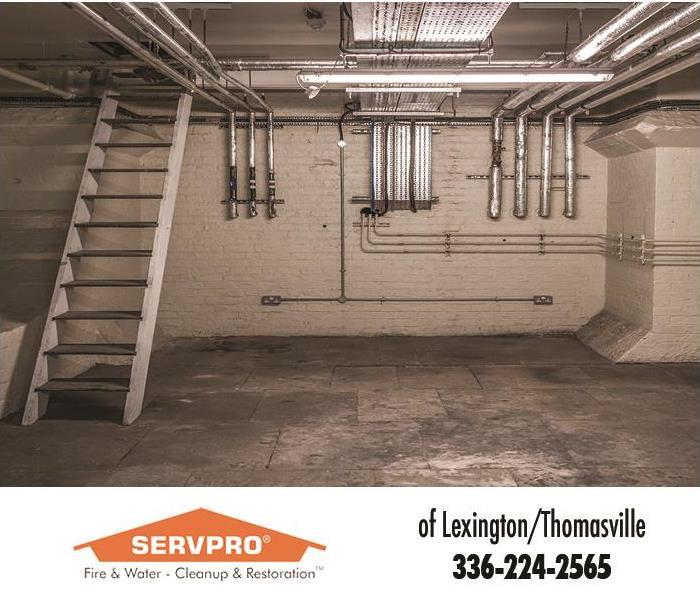Tips for waterproofing a basement or crawl space
4/20/2020 (Permalink)
Water can be a homeowner’s worst nightmare. Few things have the potential to damage a home as much as water. From leaks to flooding to moisture problems like mold, water can wreak havoc on a home.
Basements or crawl spaces are areas of a home where water can do the most damage. Basements and crawl spaces tend to be the lowest-lying spots in a home, and therefore prime spots for water to enter. Water problems in these areas can contribute to the demise of the structural integrity of the foundation.
Water can enter homes in numerous ways. Many building materials, including concrete, that seem solid at first glance actually are quite porous. As ground water collects around these materials, the weight of the accumulated water, called hydrostatic pressure, can weaken the materials, causing cracks where water can seep through. Water also can enter subterranean spaces through basement windows and gaps between footings and concrete slabs or push up through foundation floors when homes are in areas with high water tables.
Remedying water issues in a home generally breaks down into two methodologies: exterior waterproofing and interior waterproofing. Depending on the cause and severity of the water issue, one or the other, or even both, may be recommended.
Exterior waterproofing
Exterior waterproofing aims to keep water away from and out of the home. Exterior waterproofing generally includes the application of a waterproofing agent to the concrete foundation. In addition, exterior waterproofing also could include excavation so a drainage system can be installed around the entire footing of the home. Regrading, a property and properly relocating gutters and downspouts can help with many water issues.
Interior waterproofing
When water in a basement or crawl space needs to be remediated indoors, a system to collect, drain and remove water may be necessary. This can include sump pumps, drains, gravity discharge systems, and more. Moisture barriers, which can include special paints or products applied to the foundation walls and floor, also can help keep water from entering the space.
Moisture solutions
Keeping water out is only one part of the equation. Homeowners also need to manage moisture, like excessive humidity. A marriage of HVAC and waterproofing techniques may be necessary to improve air flow and remove humidity in the air.
While many homeowners have attempted to address water issues on their own, many times it is a job best left to the professionals. Because water penetration can have multifaceted causes, a professional can best assess the situation and create solutions that fit with homeowners’ budgets and needs.
And if you home experiences water or mold damage calling the experts at SERVPRO® of Lexington Thomasville is your first step in getting your home back to preloss conditions. Give us a call today at 336-224-2565.






 24/7 Emergency Service
24/7 Emergency Service
